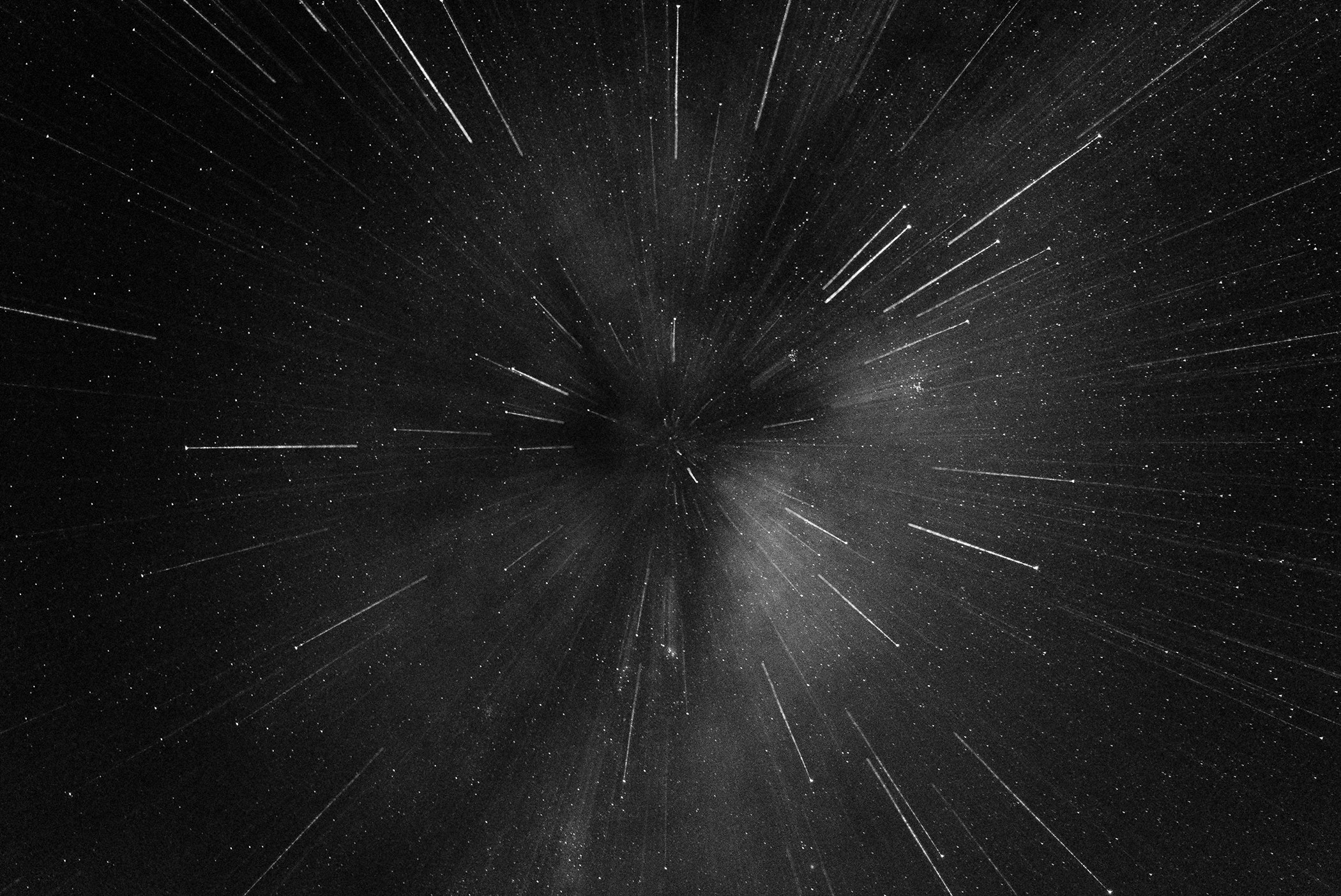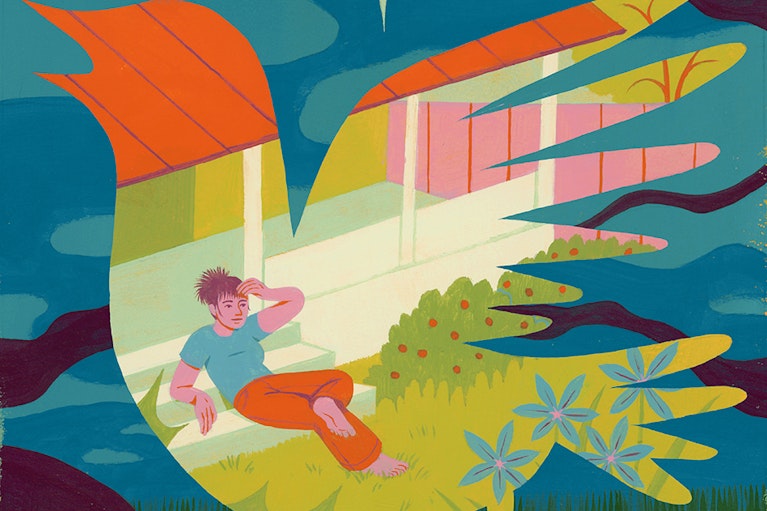Caia Hagel is a writer and digital anthropologist who explores culture, innovation and new movements in technology in search of speculative futures.
Tim Georgeson is an artist working with film, photography, musical design and environmental storytelling, often in collaboration with Australian Indigenous communities.
Music and composition: Renzo Spiteri, Dustin Lau
Photography assistant: Luke Tscharke
Film editing: Liam Riley
Editor’s note: This multimedia story contains videos with audio. By default, the videos are set to mute, so be sure to click the button to hear the music.
On the night I was supposed to have a video call with Theresa Sainty, a Pakana woman and advocate for a nonprofit called Dark Sky Tasmania, an ice storm knocked out my electricity, an extremely rare event in London. All the lights, Wi-Fi signals and electronic circuits in my end of the city went down, and instead of Sainty on FaceTime, I was served a foggy, exceptionally quiet urban night sky.
My initial reaction to this interruption of normalcy was typical of the hyperconnected city-dwelling female: I cried. But when panic gave way to surrender, and I realized that I had an opportunity to experience something special, I climbed to my rooftop above the blacked-out city. The fog soon cleared and I was mesmerized by the light of more stars than I can remember ever seeing in an urban setting, dazzling in the heavens above the skyline.
Stars tend to do this to us.
I have often thought of the night sky as a painting. Not a formal, static, human one — not framed and fixed by us in a finite space, but the opposite. I think of the night sky as painting us.
When Sainty beamed in on FaceTime a few days later from her home in a coastal town near nipaluna (Hobart), the capital of lutruwita (Tasmania), she began by saying that she did not “subscribe to the notion that our stories of night skies, creation and so on are ‘myths.’ Sky Country is where our creator beings originated as stars. We come from the stars.”





For as long as we’ve been human, we have looked to the sky to find ourselves. Our view of the stars and the planets has been crucial to the physical sciences, navigation, religion, myth and identity. Every culture in history has made meaning from that world beyond — deciphering patterns, projecting stories, predicting futures and finding existential beliefs in the night sky.
In Indigenous Australian cultures like Sainty’s, the stars inform origin stories; encode and communicate history, law, ethics and moral values; and shape the foundational systems of knowledge of people, place and life. This primeval connection remains accessible in Tasmania, the small island at the southernmost tip of Australia, where some of the darkest skies on the planet are still visible.
Sainty told me she has been working with the team at Dark Sky Tasmania to establish the island as a certified Dark Sky Place, a designation that would invigorate artificial light awareness, lobby for safe lighting policy and put restrictions on light brightness and distribution in order to maintain darkness at night.
Stargazing in Tasmania has been a crucial activity since ancient times. The First Peoples of Australia, who are among the oldest astronomers on Earth, map their stories and histories to the stars in what they call “Sky Country.” Celestial movements are used as a calendar marking seasonal shifts, food availabilities and existential adaptations. As a group of Indigenous scholars described it in a 2020 paper in the journal Political Geography, “Country includes lands, seas, waters, rocks, animals, winds and all the beings that exist and make up a place, including people. It also embraces the stars, moon, Milky Way, solar winds and storms and intergalactic plasma. Land, Sea and Sky Country are all connected, so there is no such thing as ‘outer space’ or ‘outer Country’ — no outside. What we do in one part of Country affects all others.”
The scholars Duane Hamacher, Krystal De Napoli and Bon Mott, put it this way in a 2020 paper: “The stars are used to preserve and inform complex knowledge systems, which are used for things like navigation, food economics, forecasting weather, predicting seasonal change, informing social structure, and serving as a mnemonic for committing information to memory and passing it to successive generations over long periods of time.”
Many Indigenous people map the stories of their ancestors in the stars. “The expansion of light pollution, fueled by industry and government,” Hamacher has written, “is arguably a continuation of cultural genocide — a concept often described as ‘slow violence.’”
DarkSky International (DSI), the global organization of which Dark Sky Tasmania is a chapter, preserves night skies around the world; as of March, it has helped protect more than 62,000 square miles in more than 200 certified Dark Sky Places, including parks, communities and even cities. DSI defines these areas as “public or private land possessing an exceptional or distinguished quality of starry nights and nocturnal environment, and that is specifically protected for its scientific, natural or educational value, its cultural heritage and/or public enjoyment.” Such designations promote the long-term conservation of these fragile sites. The Tasmanian effort to be certified as a Dark Sky Sanctuary would establish it among the largest, and darkest, on Earth.
The ecological consequences of eliminating the dark are profound and well-documented. Under the influence of artificial light, the natural world and the food cycles that keep all of us alive are being deeply disrupted. Migratory birds, who pollinate many of the plants we eat and carry seeds that feed other species, can careen off course and crash when confronted by artificial light. Bats, bees and other insects, all crucial in maintaining food webs, sometimes fail to mate or pollinate. Plant photosynthesis can become erratic; some trees growing beside street lamps are late to drop their leaves as winter approaches. Artificial light deters sea turtles from nesting, and freshly hatched turtles sometimes crawl up the beach onto lit-up roads instead of down into the sea. Marsupials reproduce later, causing their young to be born when there is less food available.
As Kellie Pendoley, an Australian biologist who helped write the Australian National Light Pollution Guidelines for Wildlife, told me, humans are not immune to the effects of brightening. We have become anxious, insomniac, blinded by screens. In our plights to be productive and stay relevant in a sleepless economy, we routinely overdose on artificial light and deny ourselves darkness. Excessive wakefulness in humans is linked to cancers, cardiovascular disease, hormone dysfunction, obesity, depression and diabetes, among a growing number of other physical and mental disorders.
Despite what we know about synthetic light’s negative effects on our health and its existential threat to wildlife, there are economic and psychological barriers to adopting dark sky allegiance. Working late keeps us productive; all the consumption of nightlife keeps economies oiled. Night lights also protect us from monsters and nightmares; they light the way when we walk home alone in the dark. They are so entwined with the notions of human safety, comfort and consumerism that it can feel sacrilegious, and terrifying, to turn them off.
But clear, starry, moonlit night skies are an illuminating force, literally and figuratively. Of all the ecological challenges facing us today, protecting the night sky is arguably among the easiest to tackle. Light pollution can be reduced with dark sky protection via responsible lighting policies and public education. Modifying light fixtures so that they face downwards, fitting lights with shields, replacing or discontinuing upward-facing lights, placing lights in public areas on a timer to reduce the length of their use, using low-impact amber LEDs and eliminating street lighting in protected dark sky areas — all mitigate artificial brightness.
If darkness is a primordial power that gives life, preserving the darkness of the night sky could have psychological connotations as well. “Progress” has been a trajectory of increasing the lighted-ness of being. When you are intelligent, you are referred to as “bright.” When you are charming, you “light up the room.” When you solve a problem, you “see the light.” When you are wise, you are “enlightened.” Modern industrial development has, in a sense, been a process of artificial light eclipsing natural darkness and what the dark sky represents: mystery, the unfathomable, the uncontrollable.
Light, in the conception of Western civilization, centers productivity and development at the expense of connection and concern and whatever restorative qualities we receive through the soul and sleep. “To stand under a night sky freshly washed by rain under the immensity of its stars is to be lit up,” Pendoley said, remembering walking home under dazzling starlight as a girl. “It’s awe-inspiring.” Clear night skies are brilliant — not just as a source of natural light, not just in ancient heritage, not just in maps for all those creatures of the night out there reproducing their species, but also in crucial visions into the future.
The authors acknowledge the Palawa/Pakana as the traditional and ongoing owners and custodians of the skies, land and water of lutruwita. We pay our respects to their elders both past and present and acknowledge that sovereignty has never been ceded.




